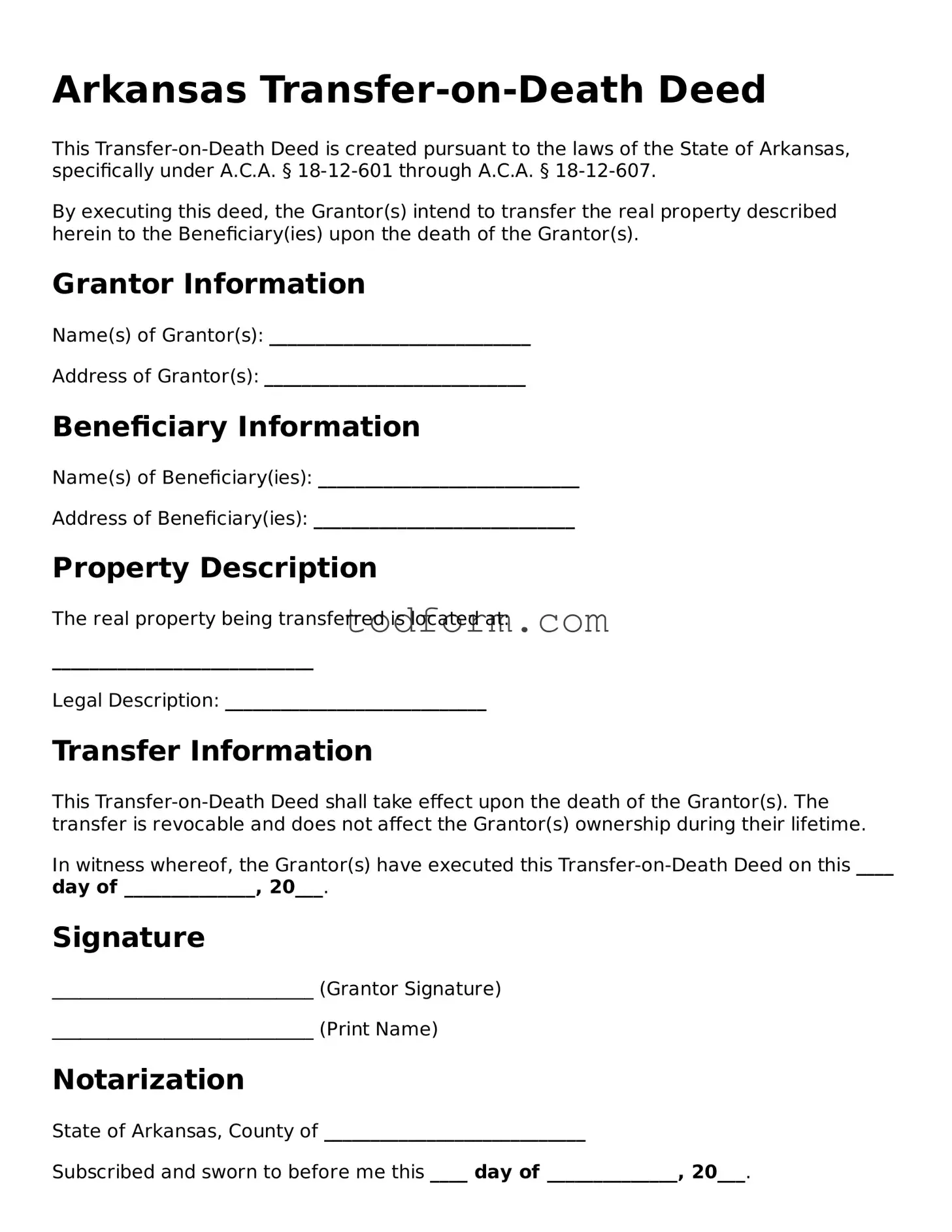The Arkansas Transfer-on-Death Deed is similar to a Living Trust. Both documents allow individuals to transfer property upon death without going through probate. A Living Trust can hold various assets, including real estate, and provides greater flexibility in managing those assets during the grantor's lifetime. Unlike the Transfer-on-Death Deed, which only applies to real estate, a Living Trust can encompass a broader range of properties and can be altered or revoked at any time while the grantor is alive.
Another document comparable to the Transfer-on-Death Deed is the Will. A Will outlines how a person's assets should be distributed after death. While both documents serve the purpose of transferring property, a Will typically goes through probate, which can be a lengthy and costly process. In contrast, the Transfer-on-Death Deed bypasses probate, allowing for a more straightforward and quicker transfer of property to beneficiaries.
The Durable Power of Attorney shares similarities with the Transfer-on-Death Deed in terms of asset management. Both documents allow for the transfer of rights regarding property, but they operate during the individual’s lifetime. A Durable Power of Attorney grants someone the authority to make decisions on behalf of another, especially in financial matters. While the Transfer-on-Death Deed only takes effect upon death, the Durable Power of Attorney is active while the individual is still alive.
The Beneficiary Designation form is another document that aligns with the Transfer-on-Death Deed. This form is often used for financial accounts, such as life insurance policies or retirement accounts, allowing the account holder to designate who will receive the assets upon their death. Like the Transfer-on-Death Deed, the Beneficiary Designation avoids probate, ensuring that the designated beneficiaries receive the assets directly and efficiently.
A Joint Tenancy Agreement also shares characteristics with the Transfer-on-Death Deed. In a Joint Tenancy, two or more individuals hold property together, and upon the death of one tenant, the property automatically transfers to the surviving tenant(s). This arrangement avoids probate, similar to the Transfer-on-Death Deed. However, unlike the deed, a Joint Tenancy involves shared ownership during the lifetime of the individuals involved.
Lastly, the Lady Bird Deed, or Enhanced Life Estate Deed, is akin to the Transfer-on-Death Deed. This document allows property owners to retain control of their property during their lifetime while designating beneficiaries to receive the property automatically upon their death. The Lady Bird Deed provides more flexibility, as it allows the original owner to sell or change the property without the beneficiaries' consent, a feature not available in the Transfer-on-Death Deed.
